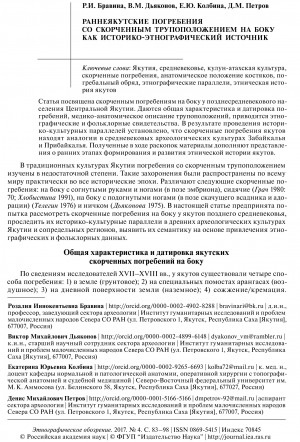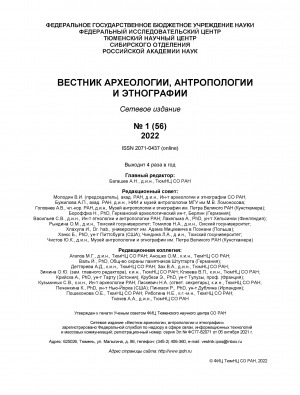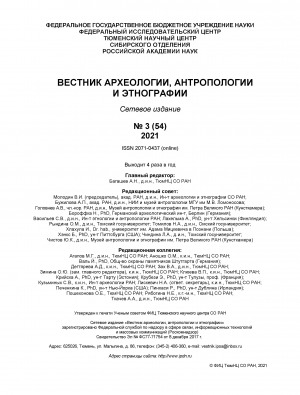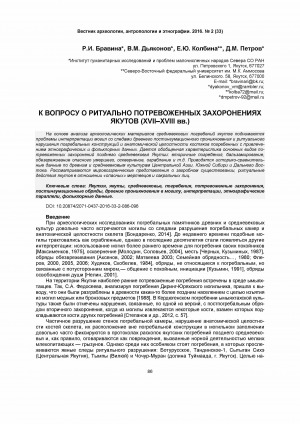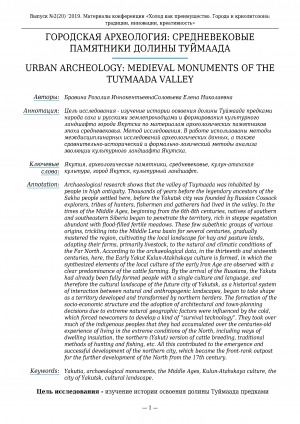Funeral rites of early Yakut culture of XVI–XVII centuries

Погребальная обрядность раннеякутской культуры XIV-XVII вв.
Funeral rites of early Yakut culture of XVI–XVII centuries
Статья в сборнике трудов конференций
Русский
Библиогр. в конце ст. ( 10 назв.)
393.05(=512.157)
Якутия; позднее средневековье; кулан-атахская культура; погребения; отличительные признаки; элементный состав; погребальный ритуал; Yakutia; late middle ages; burials; distinguishing features; funeral rite
История. Исторические науки / Этнография и историческая антропология
Древние культуры Монголии, Байкальской Сибири и Северного Китая. – 2016. – Т. 2
С. 160-165
Древние культуры Монголии, Байкальской Сибири и Северного Китая
Красноярск, Сибирский федеральный университет
This paper aims to reconstruct the funeral rites of the early Yakut culture before arrival of Russians. It is based on the analysis of the burial composition and the ritual sphere of the funerary monuments of XIV–XVII centuries. The distinguishing feature of the burial composition of this time is a small depth of the burial pit, which on average is 0,48 cm deep. Box coffins are more common, and their parameters and structure are similar to those of the Hun coffins, with a similar external camera - grobovina, a special section for grave goods, and a lengthwise dividing wall in joint burials. The western orientation of the dead is associated with the traditional worldview about the geography of the world of the dead. The dead were buried horizontally lying on their back or in a crouched position lying on their side, sometimes with the head of the deceased resting on the saddle. The accompanying grave goods consist of household items, horse equipment, weapons and hunting tools, clothing and jewellery, as well as food for the journey in the form of lumps of a young horse. In At Dabaan III burial, there was discovered a pit with a dismembered horse next to the burial of the boy. The early Yakut burials are genetically related to the whole layer of ancient and medieval cultures of the Eurasian steppes in many respects. Their origin can be traced in archaeological complexes of Central Asia, Siberia and the Far East, where the funeral traditions of the medieval tribes of Baikal region and the Amur region are their nearest equivalents.
Бравина, Р. И. Погребальная обрядность раннеякутской культуры XIV-XVII вв.=Funeral rites of early Yakut culture of XVI–XVII centuries / Р. И. Бравина // Древние культуры Монголии, Байкальской Сибири и Северного Китая : материалы VII международной научной конференции, Красноярск, 3-7 октября 2016 г. — Красноярск : Сибирский федеральный университет, 2016. — Т. 2. — С. 160-165.
Войдите в систему, чтобы открыть документ

